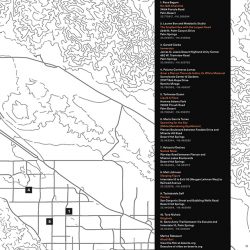
By Crystal Harrell
Offering a celebrated arts and culture scene, Desert X attracts visitors from around the globe. A free biennial outdoor art exhibit comprising site-specific installations, Desert X has become one of the biggest reoccurring events in the Coachella Valley, welcoming art lovers and culture connoisseurs to discover amazing, visual works in unexpected places.
Desert X works by both established and emerging artists explore topics such as climate change, immigration, and the environment. Highlights from the first three installments from 2017, 2019 and 2021 range from dazzling mirror displays and larger-than-life optical illusions to augmented reality installations, experiential sculptures, and vibrant wall murals. This year exhibition runs from March 4 through May 7, and here is a look at some of the featured pieces:
Gerald Clarke is an artist, university professor, cowboy, and Cahuilla tribal leader. He is known for deriving inspiration from his heritage and expressing traditional ideas in contemporary forms — mixed-media sculptures, paintings, works on paper, videos, performances and installations — that are at once poetic and politically urgent. Clarke’s artistic output resonates with histories of assemblage, pop, and conceptual art produced by both Native and non-Native artists. His Immersion project catalyzes active learning. The maze-like structure invites visitors to walk on it and move according to instructions driving a game of cards, rewarding the player with new ways of viewing and understanding the landscape. This project is supported in part by the National Endowment for the Arts. Generous support is provided by Roswitha Smale. Special thanks to the Desert Highland Gateway Estates Community Action Association.
Rana Begum is a British-Bangladeshi artist whose work blurs boundaries between painting, sculpture, design and architecture. She is influenced by both minimalism and her childhood experiences encountering spiritual architecture in Bangladesh. Responding to the ubiquity of the chain-link fence as a pattern spread across the Coachella Valley — a material that is meant to protect but also carries associations of violence — Begum diffuses the material’s role as a divider through her manipulation of its form and color. Her art piece, No. 1225 Chainlink, changing with the movement of the sun and the visitors inside of it, the work emphasizes that nothing in life is static; everything, from the world outside to our emotions within, is in a continual state of flux.
Lauren Bon is an artist whose practice embraces environmental activism. Working with architecture, performance, photography, sound and farming, she creates urban, public and land art that she terms “devices of wonder” to galvanize social and political transformation. Bon and Metabolic Studio have created a poetic object that submerges visitors in the deep past and the distant future, taking inspiration from plants, which metabolize sunlight into energy, and the blue whale, the largest animal known to have lived on Earth. The Smallest Sea with the Largest Heart is a lace-like steel sculpture of a to-scale blue whale heart is submerged in a pool pumped full of Salton-Sea water, but rather than stand as a harbinger of death, the sculpture metabolizes and creates energy and clean water that it deposits back into the atmosphere, fueling the potential for future life across the run of the exhibition and visually transforming itself in the process.
Torkwase Dyson describes herself as a painter working across multiple mediums to explore the continuity between ecology, infrastructure and architecture. Dyson’s abstract works are visual and material systems used to construct fusions of surface tension, movement, scale, real and finite space. With an emphasis on the ways black and brown bodies perceive and negotiate space as information, Dyson looks to spatial liberation strategies from historical and contemporary perspectives. She seeks to uncover new understandings of the potential for more livable geographies, recognizing that many landscapes, infrastructures, and built environments were actively shaped to devalue Black life. Liquid A Place is part of an ongoing series that started from the premise that we are the water in the room, inviting viewers to consider their bodily interconnection with rivers and oceans that surround us.
By employing drawing, sculpture, performance, writing and multimedia installation, Paloma Contreras Lomas addresses topics such as patriarchy, violence, class segregation, colonial guilt and constructed middle-class identity with a cinematic sense of humor. She exercises a playful sense of lightness to draw the viewer in to ponder heavy issues that are rarely addressed in Mexican society. Amar a Dios en Tierra de Indios, Es Oficio Maternal, features a dated car that has screeched to a halt in Sunnylands. An absurd array of tangled limbs of two mysterious characters wearing long hats sprawl out of the car and onto the site’s pristine, manicured grounds. Plush, long hands armed with soft-stuffed guns hang from the windows, barely camouflaged by the artificial overgrowth invading the sculpture.
You can find more information about all of the artist participants and their installations at DesertX.org.
Download the Desert X app before you head out to see the installations. The app includes turn-by-turn directions to each site, artists bios and information about the artworks.
iOS: https://apps.apple.com/us/app/desert-x/id1450319034
Android: https://play.google.com/store/apps/dev?id=8549847503297187354
-
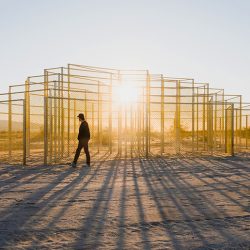
Immersion - Gerald Clarke
-
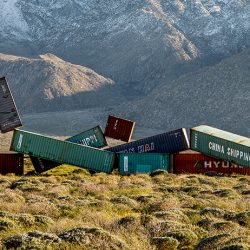
Sleeping Figure - Matt Johnson
-
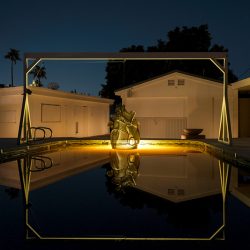
The Smallest Sea with the Largest Heart - Lauren Bon
-
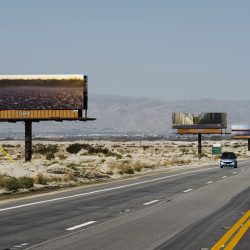
Originals - Tyre D. Nichols
-
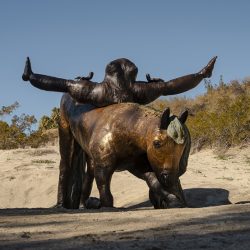
Pioneer - Tschabalala Self
-

Liquid A Place - Torkwase Dyson
-
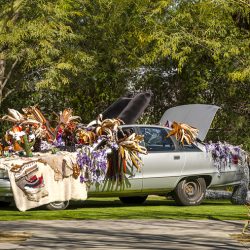
Amar a Dios en Tierra de Indios, Es Oficio Maternal - Paloma Contreras Lomas
-
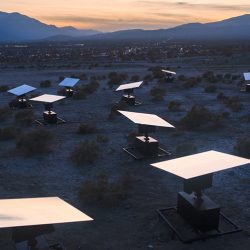
Searching For The Sky (While Maintianing Equilibrium) - Mario Garcia Torres
-
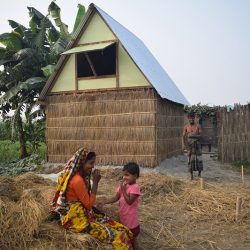
Khudi Bari - Marina Tabassum
-
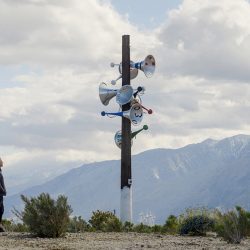
Namak Nazar - Hylozoic/Desires
-
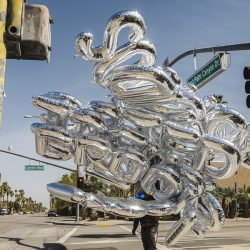
Chimera - Hector Zamora
-
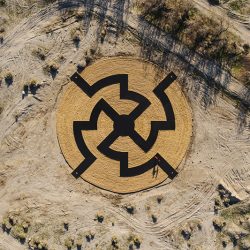
Immersion - Gerald Clarke
-
